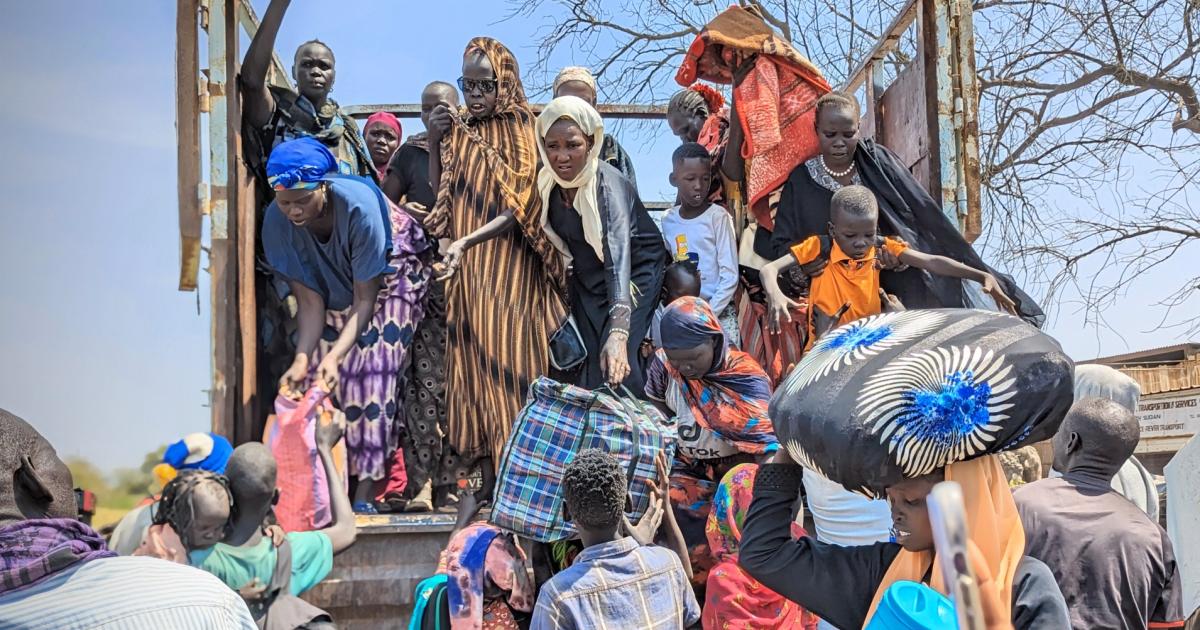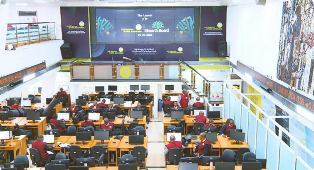Geneva/ Port Sudan – A staggering 20,000 people are forced to flee their homes in Sudan each day, half of them children, according to a new report by the International Organization for Migration’s (IOM) Displacement Tracking Matrix (DTM).
The report shows that 53 per cent of those displaced are children under 18, highlighting the vulnerability and immense challenges faced by the younger generation who are often the most affected by conflicts and displacement.
More than 8.6 million people have been forced to flee their homes over the past year as fighting spreads in the country including many who were previously displaced multiple times.
“Sudan is on a tragically fast track to becoming one of the world’s biggest humanitarian crises in decades, and the conflict that has engulfed the country is creating pressure throughout the region. Millions of people are displaced, hungry and vulnerable to exploitation and abuse, but their plight is being ignored by too much of the world,” said IOM Director General Amy Pope in Paris where she is attending the International Humanitarian Conference for Sudan and its Neighbours.
“We implore international leaders to rise to the moment, help us bring humanitarian aid to Sudan and use their influence to help bring peace.”
As the war in Sudan enters its second year, IOM urges stronger international action to bring the fighting to an end and significantly boost funding for humanitarian operations to respond to the mounting needs.
The situation in Sudan, already the largest internal displacement crisis globally, is further worsened by the critically underfunded humanitarian response. Only 5 percent of the USD 2.7 billion Humanitarian Response Plan seeking to reach 14.7 million people has been secured. This shortfall risks further deterioration of the humanitarian situation.
Since war broke out, 6.6 million people have been forcibly displaced within Sudan. The war has also disrupted economic activity and cut supply and aid lines, leading to food insecurity of a massive scale with about 5 million people on the brink of famine.
The massive influx of people seeking safety from the horrors of war is putting incredible strain on infrastructure and services, exacerbating food shortages further. Women and girls are facing increased risks of gender-based violence, sexual exploitation, and access to food.
Humanitarians have been facing immense challenges in accessing communities in need, especially in heavy fighting zones in Khartoum, Darfur, Kordofan and Aj-Jazirah, further exacerbating needs and difficulties.
In neighbouring countries where some 2 million people have crossed from Sudan, the crisis is severely straining states’ capacities to cope with the inflows of refugees, returnees and third-country nationals. So far, the number of arrivals in the neighbouring countries include 730,550 in Chad, 629,902 in South Sudan, 514,827 in Egypt, 119,525 in Ethiopia, 29,444 in the Central Africa Republic, and 7,620 in Libya.
IOM continues to deliver immediate and life-saving assistance. To date, IOM has reached over 2 million people in need with essential multisectoral assistance across Sudan and neighbouring countries, including over 1.6 million inside Sudan.
IOM calls for increased humanitarian funding to meet the growing needs and to ensure the delivery of life-saving assistance and essential services to the displaced individuals and host communities. Additionally, efforts should be made to strengthen resilience, build local capacities, promote Peace and durable solutions for the affected populations.
Resources
***
For more information:
In Geneva: [email protected];
In Port Sudan: Lisa George at [email protected];
In Cairo: Tamim Elyan at [email protected]




